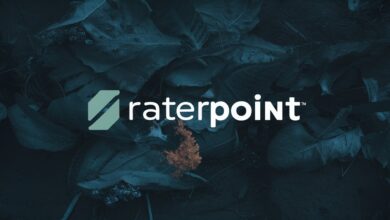Why Every Business Needs Data Loss Prevention Software?
Data Loss Prevention Software Details

Companies today face maximum exposure to data breaches and leaks, together with unlawful internal exposure of sensitive information in their highly connected digital networks. Responsible businesses maintain large collections of confidential data, including intellectual property as well as customer records and financial information, and proprietary business strategies. Data protection has become a necessity because companies cannot afford to leave their sensitive information vulnerable any longer.
The crucial security component enters through data loss prevention software at this point. The combination of data monitoring and endpoint system protection, and data movement management offered by DLP software helps organizations achieve risk reduction alongside compliance maintenance and accountability development. The paper examines Data Loss Prevention Software, including its definition and importance, followed by guidelines for selecting an appropriate solution for business needs.
What is Data Loss Prevention Software
The purpose of data loss prevention software serves as a security tool to detect sensitive data while monitoring and protecting it against unauthorized incidents of intentional or unintended exposure. The software system protects sensitive information in all technology systems from endpoints to cloud storage to internal operational environments.
The main purpose of DLP software is to stop unauthorized transfer of sensitive information beyond organizational borders. The software blocks staff members from sending work-related files to external addresses as well as blocking unauthorized cloud storage and data transfers to USB devices.
Organizations must consider data loss prevention software to be essential in modern work environments that rely on remote work and Bring Your Own Device programs, and cloud services. Data loss prevention software simultaneously increases business productivity while reinforcing compliance requirements with GDPR, HIPAA and CCPA.
Key Features of Data Loss Prevention Software
A successful data loss prevention platform consists of multiple strong features which allow businesses to monitor and protect their data systems against various security threats. Here are some key capabilities:
- Insider Threat Prevention: The data protection system tracks employee actions to respond to warning signs when staff members attempt unauthorized file sharing or access.
- Data Misconduct Detection: This function detects data-related policy violations along with mishandling issues that produce probable breaches of security.
- User Behavior Analytics (UBA): User Behavior Analytics functions by tracking user activities toward sensitive data while detecting odd patterns throughout the data.
- Continuous Data Monitoring: The system enables time-based monitoring of information from every platform starting from emails through endpoints to networks and cloud storage.
- Employee Monitoring: Employee Monitoring provides systems that expose staff activities without intruding on their work to support security alongside productivity goals.
Organizations obtain enforcement capabilities with their policies and data leak prevention abilities through these features which help them react swiftly to incidents to maintain operational smoothness.
The Benefits of Using Data Loss Prevention Software
All organizations across different industries and sizes gain multiple advantages through the implementation of data loss prevention software.
- Risk Reduction: Data loss prevention software acts as a protective barrier through its feature to control access rules which stops malicious theft and unintentional leaks.
- Protection from Insider Threats: By protecting internal security you cover many potential threats that originate from your own company workforce which includes angry staff members who may steal data or personnel whose actions inadvertently allow information leaks. DLP tools mitigate these threats.
- Enhanced Compliance: Reliable Access Control: The system protects all industry-sensitive material through effective security measures for personal data and health records together with financial records.
- Operational Efficiency: The automation of monitoring functions together with reporting features in DLP software enables operational efficiency because it reduces manual processes which contribute to better decision-making performance.
- Reputation Management: The protection of customers’ trust together with brand reliability and sustainable enterprise growth stems from proper reputation management through data breach prevention.
Organizations that manage small businesses to global enterprises receive clear investment returns from their DLP framework implementation which combines risk reduction with enhanced governance.
Ensuring Compliance and Ethical Use of DLP Software
Modern organizations must continually demonstrate their data collection practices since data protection regulations become increasingly stringent across various territories. Organizations in Europe and the U.S. must strictly adhere to rules enforced by GDPR and HIPAA respectively which control handling of personal data.
The DLP software allows organizations to follow these regulations through data usage controls as well as automated audit trails and transparent access logs. Remainder of the article discusses ethical deployment as an essential foundation to protect employee privacy alongside organizational security measures.
Using DLP software requires great attention to its implementation. Organizations need to establish precise usage regulations together with employee notification procedures about monitoring methods while making transparency a priority. Ethical deployment leads to legal challenge avoidance together with building an environment based on trust.
Real-World Use Cases Across Industries
DLP software assists all types of organizations which deal with protected data or regulated information through universal applications. Here are a few examples:
- Healthcare: Medical institutions along with clinics employ DLP systems to defend healthcare records while fulfilling HIPAA requirements.
- Finance: Finance institutions use DLP to defend banking transactions and maintain financial security while preventing fraudulent activities.
- Legal Firms: Law office staff protects sensitive case files together with client communications through secure methods.
- Education: The protection of student data, together with research information, occurs within educational institutions such as schools and universities.
- Retail: Online retailers implement E-commerce strategies to stop unauthorized sharing of customer information together with their payment methods.
Businesses in each industry sector need to incorporate data protection protocols into their operations since this approach minimizes loss and provides accountability data.
Choosing the Right DLP Software
Different DLP solution options from multiple vendors create a difficult task to select the correct product. Organizations should base their selection on four evaluation criteria:
- Scalability: Select data loss prevention software that provides scalability measures to handle expanding data volume and organizational growth.
- Ease of Integration: Search for data loss prevention tools that will merge effortlessly with your current technical infrastructure, which includes your existing email software and cloud storage platforms and endpoints.
- User-Friendliness: Fundamental interfaces with easy use will speed up user training while reducing comprehension problems.
- Customization: Data protection requirements can be accommodated through software features that enable users to implement customized rules and policies.
- Support and Updates: Check if the vendor provides sustained assistance along with program enhancements and reliable customer support service.
Your organization should evaluate its needs to match security software for data loss prevention which provides optimal protection solutions combined with a workflow-friendly design.
Best Practices for Implementing DLP Software
Implementing the tool requires equal importance to the tool itself. These are successful methods for effective DLP software deployment:
- Start with a Risk Assessment: Initiate your project with a risk assessment to determine the data location and potential threats affecting it.
- Define Clear Policies: The organization needs to create data-handling policies that experts can understand as well as departments can enforce easily.
- Educate Employees: The organization should teach personnel about protected data assets, along with explaining their significance, and show workers ways to assist with regulatory requirements.
- Monitor Gradually: A passive monitoring phase should come first before strict rule enforcement because the transition must be done with minimal disruption.
- Continuously Improve: An organization should review logs repeatedly to do two things: update their policies and adapt to business processes as well as evolving security threats.
A well-planned, gradual deployment method will lead to higher acceptance rates and lasting defense strategies for protected data.
Trends and the Future of DLP Software
Data loss prevention software development expands to suit modern work environments and escalating cloud adoption and sophisticated threats. These are several present trends relevant to data loss prevention software:
- AI and Machine Learning: AI and Machine Learning technologies combine in systems which enhance threat detection precision and function as automated response platforms.
- Cloud-native DLP: Cloud-native DLP solutions are gaining popularity since many vendors produce software tools dedicated to protecting cloud storage environments.
- Zero Trust Architecture: More organizations have started implementing zero-trust architecture which requires default untrusted status for users and systems and this makes DLP applications more important.
- Data Classification Advancements: Modern DLP tools provide automatic sensitivity-based taggings and sorting capabilities during data classification procedures.
- Privacy-First Design: The transition to privacy-first design happens in DLP solutions because vendors want to balance compliance requirements with user data confidentiality.
Knowledge about evolving data classification methods empowers business organizations to build strategic decisions that produce future-successful results while maintaining robust data protection systems.
Bottom Line
The present-day data-centric world demands businesses to handle information protection as a fundamental business need. The necessity of implementing data loss prevention software leaves no room for doubt because organizations require this solution to block both external and internal security threats. Through its data protection abilities, DLP software provides unmatched benefits that cover data leak prevention and operational efficiency enhancement along with regulatory compliance support.
Companies can select ideal DLP solutions when they understand how these systems function and what they provide, and how organizations currently use them. Your organization will achieve long-standing resilience, trust, and success through forward-thinking decision-making about data security for evolving digital environments.





